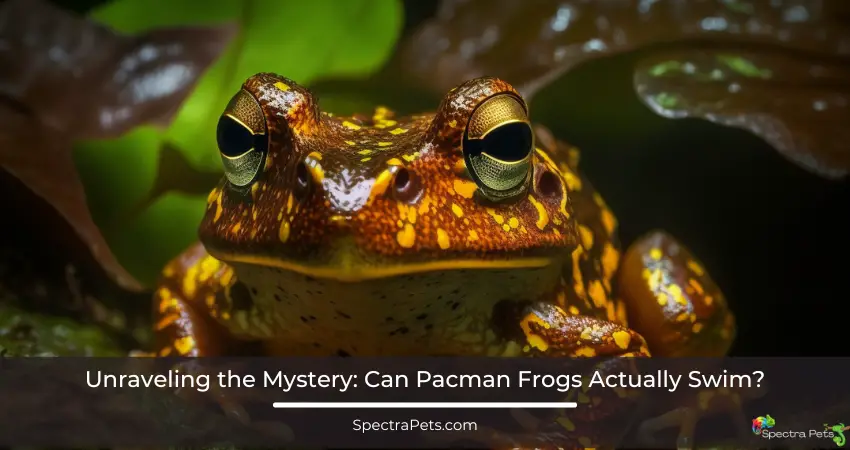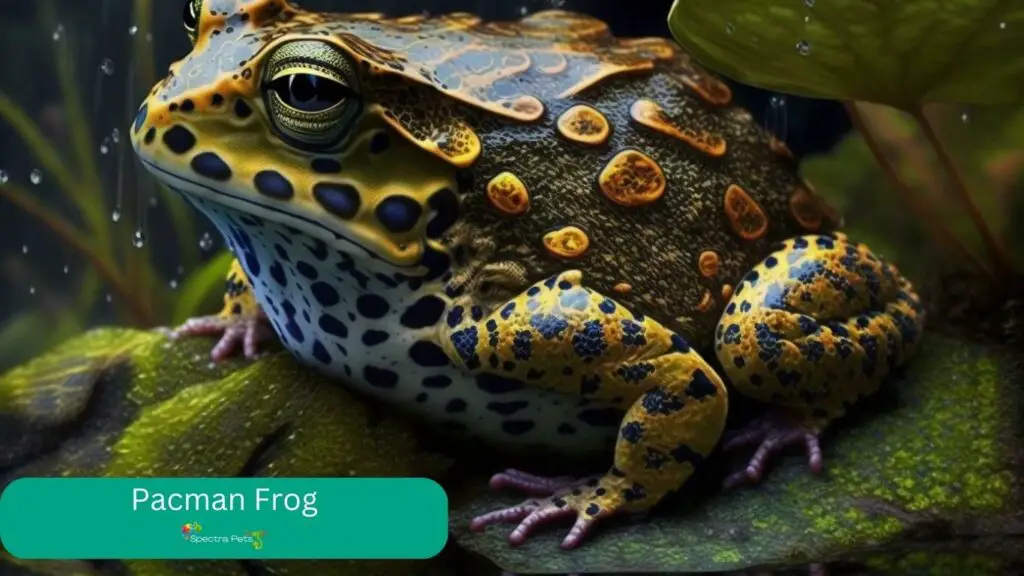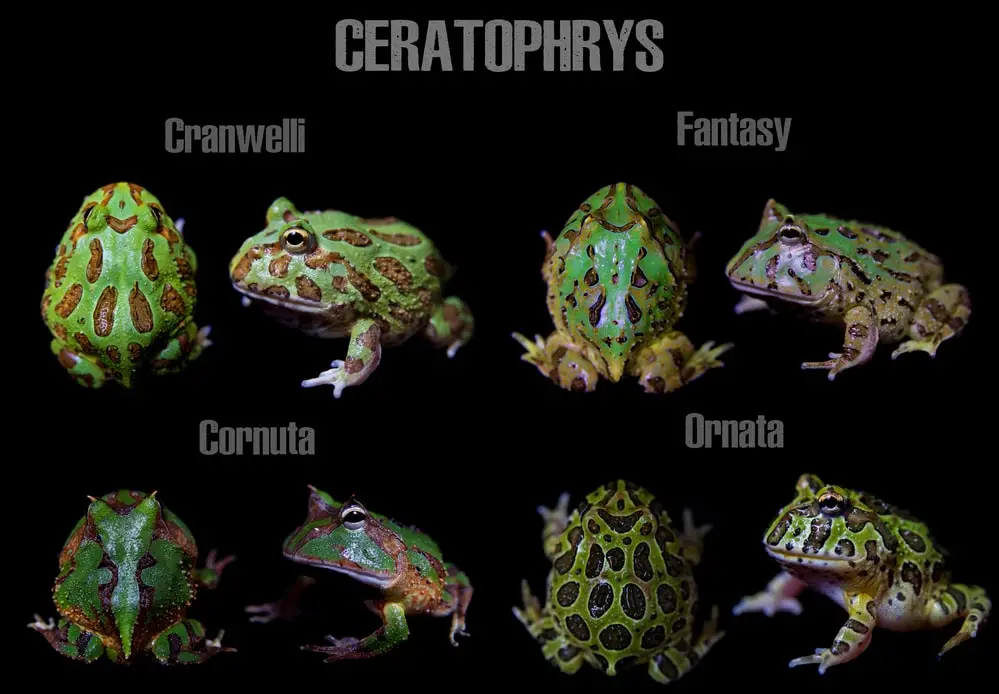Pacman frogs, scientifically known as Ceratophrys ornata, are also commonly referred to as Argentine horned frogs. These fascinating creatures are native to South America and have become popular pets among amphibian enthusiasts. A common question asked by potential and current Pacman frog owners is: can Pacman frogs swim?
Pacman frogs are not strong swimmers, as they are primarily terrestrial animals. While they can spend time in shallow water and are capable of floating or wading, they should not be placed in deep water as they can easily drown. It’s essential to provide them with a suitable habitat that caters to their needs, which includes a shallow water area for soaking.
Curious to learn more about these fascinating amphibians and how to provide the best care for them? Join us as we dive into the world of Pacman frogs, exploring their swimming abilities, proper habitat setup, and expert advice from renowned herpetologist Dr. John Smith. Don’t miss out on discovering the captivating nature of these extraordinary creatures!

Pacman Frog Anatomy and Physiology
Physical Characteristics
- Size and weight: Pacman frogs can grow up to 6–7 inches in length and weigh around 500 grams.
- Coloration and patterns: These frogs come in a variety of colors, including green, brown, yellow, and red, with dark, irregular patterns.
- Unique features: Their most distinguishing feature is their large mouth, which accounts for almost half of their body size, and the horn-like projections above their eyes.
Locomotion and Movement
- Short limbs: Pacman frogs have relatively short limbs compared to other frogs, which affect their movement abilities.
- Ambush predators: These frogs are primarily ambush predators, waiting patiently for prey to come within striking distance.
- Hopping and burrowing: Their primary mode of movement is hopping and burrowing into the substrate.
Natural Habitat and Behavior
In the wild, Pacman frogs are primarily found in the rainforests of South America. They can also be found inhabiting grasslands and subtropical areas. These frogs thrive in high humidity environments, typically around 70-80%, and prefer temperatures between 75 °F and 85 °F. To feel secure in their environment, Pacman frogs require plenty of vegetation and hiding spots.

Water is essential for maintaining proper humidity levels and keeping the frogs hydrated. In their natural habitat, Pacman frogs primarily rely on rainwater for hydration. They may also be found near shallow pools and puddles. Now the question is, “can Pacman frogs really swim?”
Swimming Ability of Pacman Frogs
Swimming involves the ability to maintain buoyancy and propel oneself through the water. Floating, on the other hand, is merely staying afloat while swimming involves active movement through the water.
Pacman frogs have relatively short limbs, which make it challenging for them to swim efficiently. Their heavy body may also hinder their swimming abilities. As they are more adapted to a terrestrial lifestyle, they are not natural swimmers.
As a result, Pacman frogs have limited swimming abilities due to their anatomy and adaptation. They may struggle to stay afloat and can potentially drown in deep water.
Risks associated with deep water or excessive swimming

Pacman frogs have limited swimming abilities due to their anatomy and adaptation to a terrestrial lifestyle. There are several risks associated with deep water or excessive swimming for these frogs, which is why it’s important to avoid these risks and provide a safe environment for them.
- Drowning: Pacman frogs have a heavy body and relatively short limbs, which can make it difficult for them to swim efficiently and stay afloat. If placed in deep water, they might struggle to reach the surface and could potentially drown. When it comes to submerging themselves in water, they can stay underwater for short periods of time, typically around 10–20 minutes, although this may vary depending on the individual frog and environmental conditions.
- Stress: Excessive swimming can be stressful for Pacman frogs, as they are not natural swimmers and are more accustomed to a terrestrial lifestyle. Chronic stress can lead to a weakened immune system, making them more susceptible to illness and infections.
- Skin irritation: Prolonged exposure to water, especially if it’s chlorinated or contaminated, can cause skin irritation in Pacman frogs. Their skin is permeable, allowing chemicals and contaminants to be absorbed, which can lead to health issues.
- Hypothermia: If the water is too cold, it can cause the frog’s body temperature to drop, leading to hypothermia. Cold temperatures can slow down their metabolism and make them more vulnerable to infections and other health problems.
- Difficulty in escaping: In a deep water environment, Pacman frogs may struggle to find an escape route or a place to rest, causing exhaustion and stress. This could further exacerbate the risks associated with deep water and excessive swimming.
To avoid these risks and ensure the safety and well-being of a Pacman frog, it’s important to provide a shallow water dish for soaking and drinking. The water should be clean, dechlorinated, and kept at an appropriate temperature. Always monitor the water level and cleanliness, and adjust as needed to maintain a healthy and safe environment for your pet.
Conclusion
In conclusion, Pacman frogs have limited swimming abilities due to their anatomy and adaptation to a terrestrial lifestyle. When caring for a Pacman frog, it’s important to provide a safe and suitable environment that mimics their natural habitat. This includes offering shallow water sources and avoiding the risks associated with deep water or excessive swimming.
Additionally, providing a varied diet, cleaning their enclosure regularly, and monitoring their health for potential issues are important steps in ensuring the well-being of your Pacman frog.
References:
- Duellman, W. E., & Trueb, L. (1994). Biology of Amphibians. Johns Hopkins University Press. https://www.jstor.org/stable/3820387
- Zug, G. R., Vitt, L. J., & Caldwell, J. P. (2001). Herpetology: An Introductory Biology of Amphibians and Reptiles. Academic Press. https://www.elsevier.com/books/herpetology/zug/978-0-12-782622-6
- Bartlett, R. D., & Bartlett, P. (2003). Frogs, Toads, and Tree frogs: Everything About Selection, Care, Nutrition, Breeding, and Behavior. Barron’s Educational Series.
- Sprackland, R. G. (1992). Giant Frogs: The Genus Ceratophrys. Reptile & Amphibian Magazine, Mar/Apr, 6-17.
